 We would like to welcome you to the 2025 Georgia Peanut Tour. Whether this is your first time with us, or you are a “Peanut Tour Veteran,” we are very happy to host you on our 37th tour. As in previous years, you will be immersed in the production efforts of one of Georgia’s most important agricultural crops, and we hope this gives you better insight not only into the challenges our farmers face, but also reasons why we say that the world’s best peanuts are produced in Georgia. It is our hope that you will come to better understand and appreciate the heritage of peanut production in our state. Those engaged in the peanut industry, including farmers, buyers, processors, researchers, Extension personnel, and Georgia Peanut Commission representatives, are proud that Georgia is the leading peanut-producing state in the United States, and we are excited to share this year’s crop with you.
We would like to welcome you to the 2025 Georgia Peanut Tour. Whether this is your first time with us, or you are a “Peanut Tour Veteran,” we are very happy to host you on our 37th tour. As in previous years, you will be immersed in the production efforts of one of Georgia’s most important agricultural crops, and we hope this gives you better insight not only into the challenges our farmers face, but also reasons why we say that the world’s best peanuts are produced in Georgia. It is our hope that you will come to better understand and appreciate the heritage of peanut production in our state. Those engaged in the peanut industry, including farmers, buyers, processors, researchers, Extension personnel, and Georgia Peanut Commission representatives, are proud that Georgia is the leading peanut-producing state in the United States, and we are excited to share this year’s crop with you.
The 2025 Georgia Peanut Tour is staged in the south-central region of our state’s production area and begins on the afternoon of Tuesday, September 16, with a “Hot Topics” symposium. Expert speakers will address the status of our peanut crop and provide a special focus on enhancing the resilience of the peanut industry.
The next two days of the tour provide you an opportunity to learn more about production, research, processing and more. Field visits will provide you with a glimpse of peanut production, digging, and harvest. In addition, you will learn about the importance of on-farm research collaborations between the University of Georgia, Fort Valley State University, and commercial peanut farmers. The tour also includes visits down the supply chain to Tifton Quality Peanut’s shelling plant and Douglas Peanut’s buying point. Attendees will also tour Columbo, MANA, BCT Gin, and more!
Again, on behalf of the Peanut Tour Committee, with members from the USDA-ARS Peanut Lab, the Georgia Peanut Commission, and the University of Georgia, I warmly welcome you to the 37th Georgia Peanut Tour! We hope that over the next few days you will better appreciate the complexity of the peanut industry in Georgia and the personal commitments from all involved in producing the world’s finest peanuts! We hope our events will allow for fellowship and that you enjoy Georgia’s hospitality exploring a beautiful, rural part of our state. We offer our sincere thanks to all the sponsors, who through their generosity, help make this tour possible. Please do not hesitate to let us know how we can help you as we travel the highways and byways of our state’s production area. We are proud of our peanut farmers and our peanut industry, and we are happy that we can share them with you.


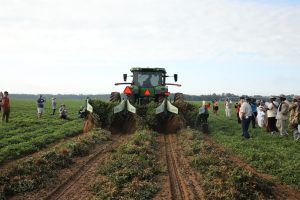 The field was planted behind a cover crop of black oats and radish. Riley strip tilled the peanuts in at planting. Throughout the season, Riley has an issues with drought in the dry corners of the field where the irrigation does not apply water to the crop. He has also had issues with spider mites which thrive in dry conditions.
The field was planted behind a cover crop of black oats and radish. Riley strip tilled the peanuts in at planting. Throughout the season, Riley has an issues with drought in the dry corners of the field where the irrigation does not apply water to the crop. He has also had issues with spider mites which thrive in dry conditions.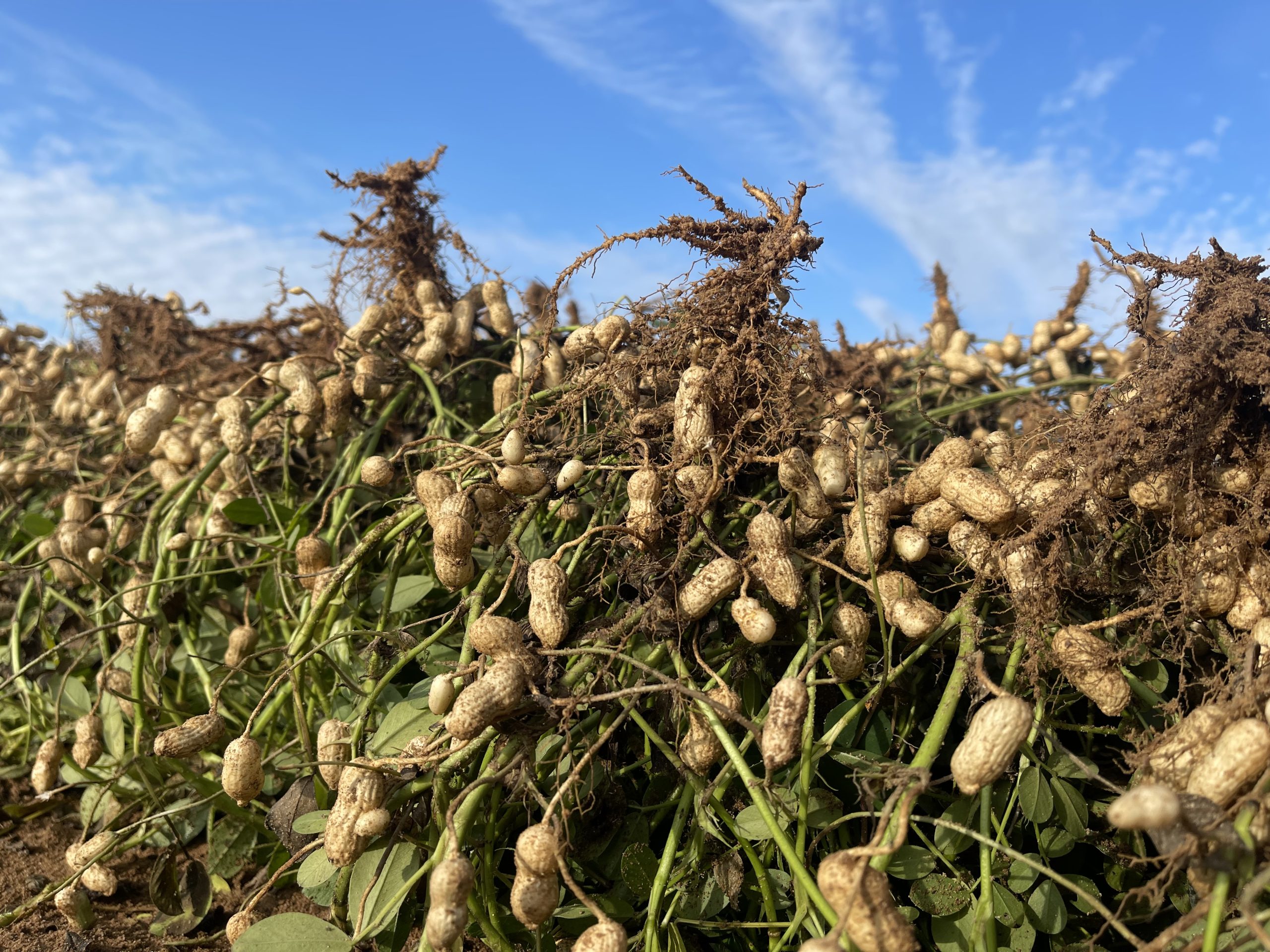
 The thirty-sixth annual Georgia Peanut Tour will be held September 17-19, 2024, in Americus, Georgia, and the surrounding area. The tour brings the latest information on peanuts while giving a first-hand view of industry infrastructure from production and handling to processing and utilization. Tour stops will be made in several peanut producing counties in South Georgia.
The thirty-sixth annual Georgia Peanut Tour will be held September 17-19, 2024, in Americus, Georgia, and the surrounding area. The tour brings the latest information on peanuts while giving a first-hand view of industry infrastructure from production and handling to processing and utilization. Tour stops will be made in several peanut producing counties in South Georgia. During the final stop on the Georgia Peanut Tour attendees were able to tour the grower-owned peanut processing facility,
During the final stop on the Georgia Peanut Tour attendees were able to tour the grower-owned peanut processing facility, 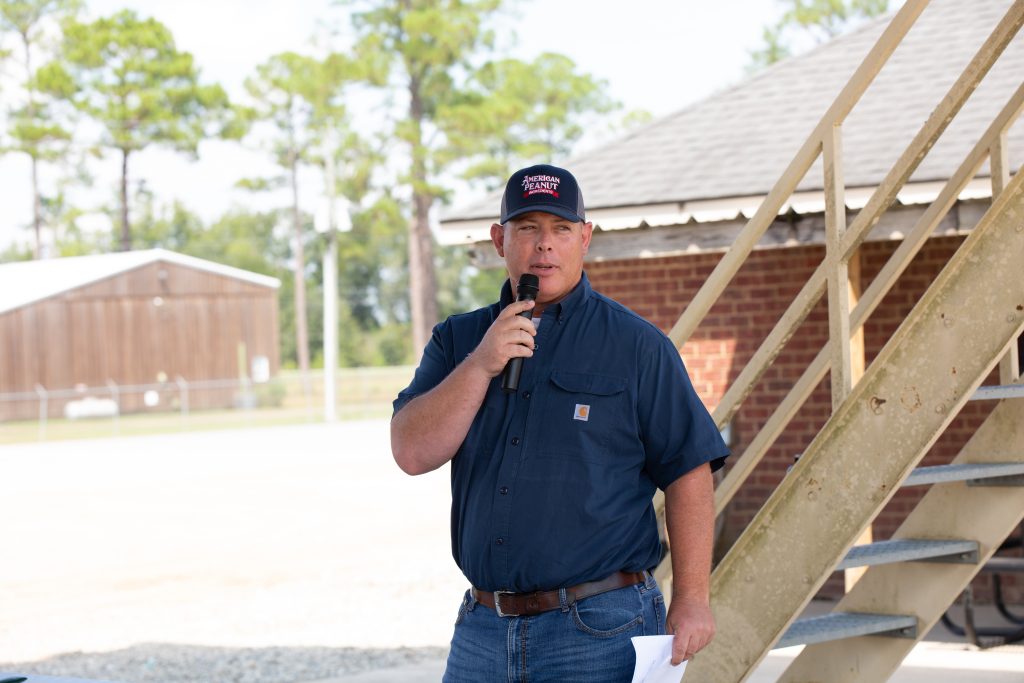 Neal Flannagen, president and CEO of APGG, welcomed attendees to APGG and provided an overview of the facility. The first step of the process includes peanuts arriving to APGG from the farm. APGG currently processes 80,000 tons of farmer stock peanuts at their buying point.
Neal Flannagen, president and CEO of APGG, welcomed attendees to APGG and provided an overview of the facility. The first step of the process includes peanuts arriving to APGG from the farm. APGG currently processes 80,000 tons of farmer stock peanuts at their buying point.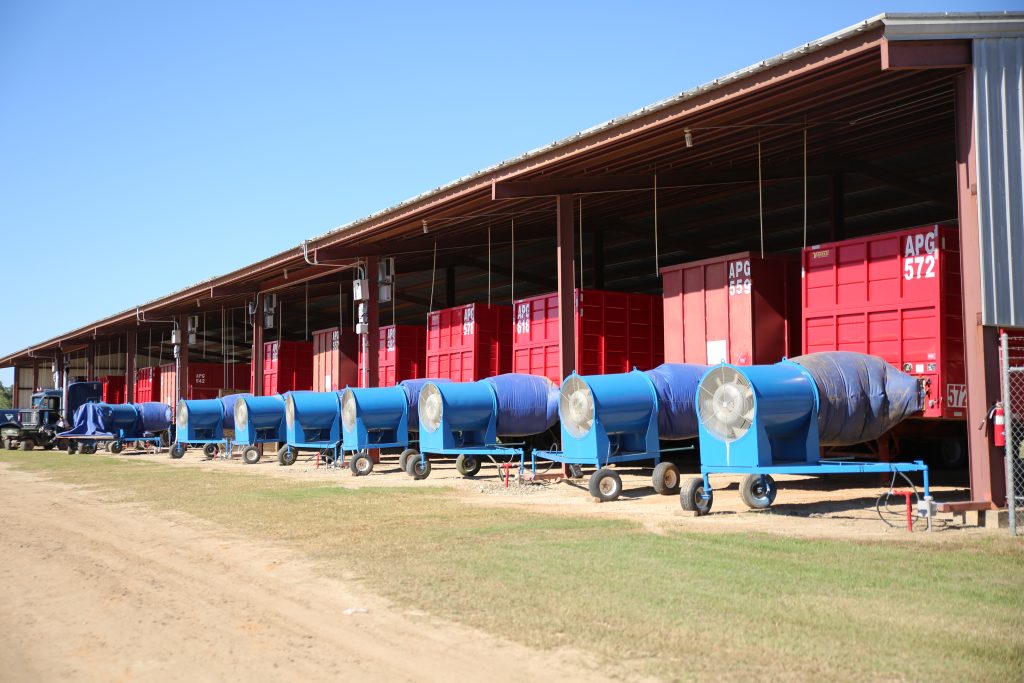
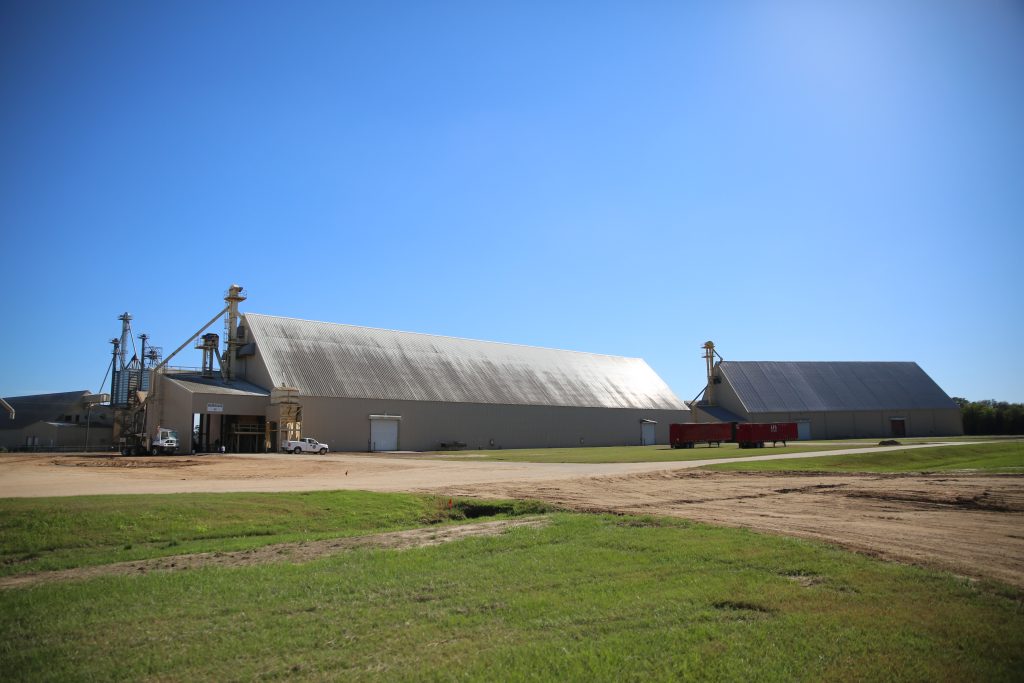
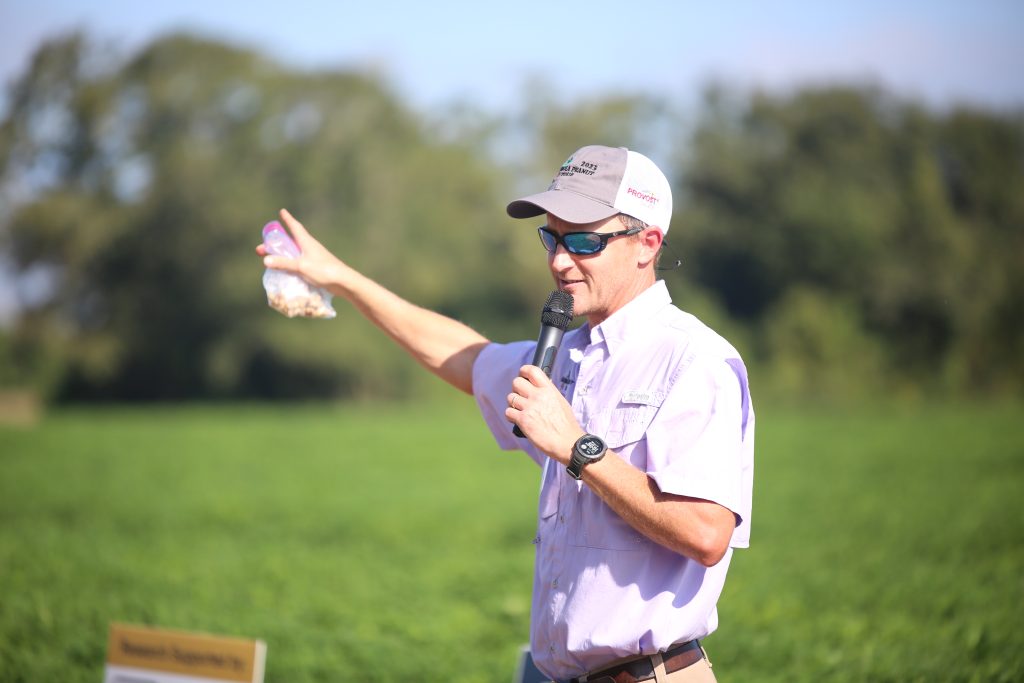 Mark Abney, peanut entomologist at the University of Georgia, provided an overview of his work during the 2023 Georgia Peanut Tour. He receives the question many times from people asking, what does the peanut entomologist at University of Georgia do?
Mark Abney, peanut entomologist at the University of Georgia, provided an overview of his work during the 2023 Georgia Peanut Tour. He receives the question many times from people asking, what does the peanut entomologist at University of Georgia do?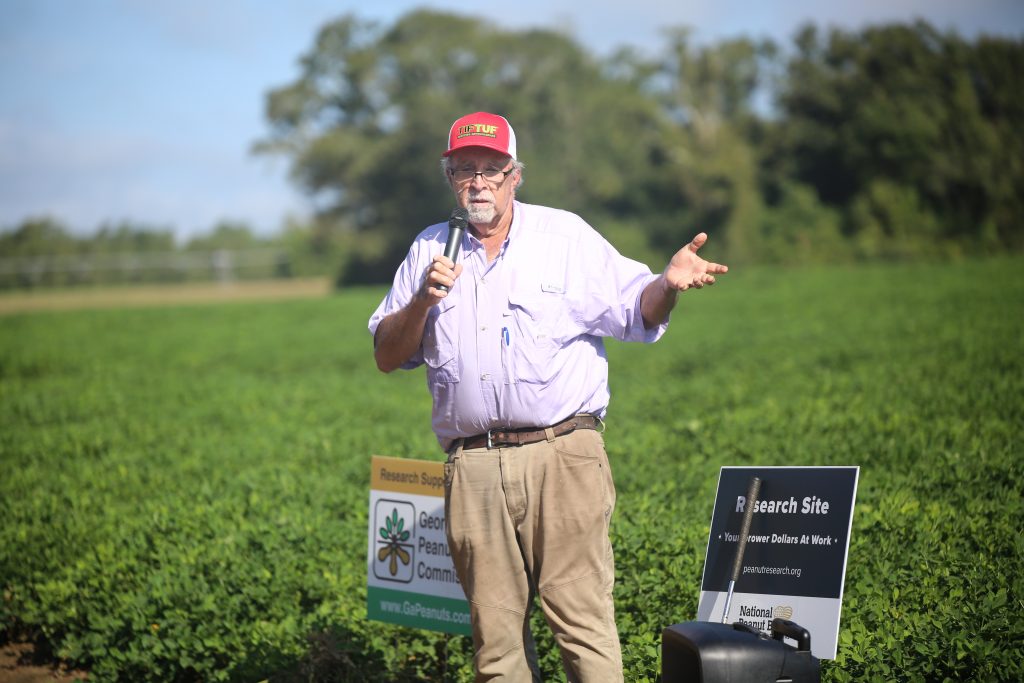 Albert Culbreath, research plant pathologist at the University of Georgia, started his career in Tifton back in 1989. Culbreath came to the university to work on foliar diseases of peanuts, but tomato spotted wilt virus made an appearance and he has been working on that virus ever since his arrival to Tifton.
Albert Culbreath, research plant pathologist at the University of Georgia, started his career in Tifton back in 1989. Culbreath came to the university to work on foliar diseases of peanuts, but tomato spotted wilt virus made an appearance and he has been working on that virus ever since his arrival to Tifton.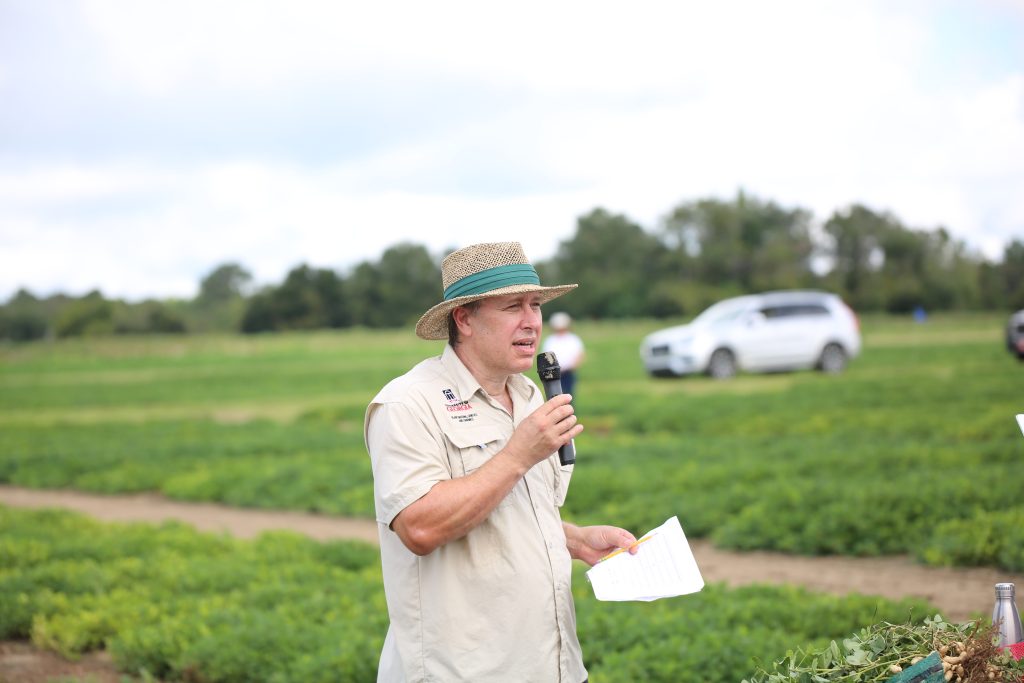 David Bertioli is a professor in the University of Georgia Plant Breeding, Genetics and Genomics program. He works closely with Soraya Bertioli in what is known as the wild peanut lab. Now to explain what the wild peanut lab is, let me take you back five or ten thousand years to South America when the first inhabitants were growing wild peanuts. That area is now known as Argentina and Bolivia.
David Bertioli is a professor in the University of Georgia Plant Breeding, Genetics and Genomics program. He works closely with Soraya Bertioli in what is known as the wild peanut lab. Now to explain what the wild peanut lab is, let me take you back five or ten thousand years to South America when the first inhabitants were growing wild peanuts. That area is now known as Argentina and Bolivia.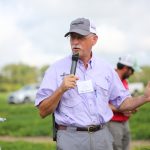 University of Georgia plant pathologist Tim Brenneman studies peanut diseases and a range of pests that attack peanuts. During the 2023 Georgia Peanut Tour visit to the University of Georgia Attapulgus Research and Education Center, Brenneman discussed nematodes and the impact this pest has on peanuts.
University of Georgia plant pathologist Tim Brenneman studies peanut diseases and a range of pests that attack peanuts. During the 2023 Georgia Peanut Tour visit to the University of Georgia Attapulgus Research and Education Center, Brenneman discussed nematodes and the impact this pest has on peanuts.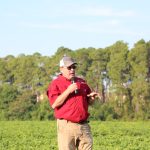 During the 2023 Georgia Peanut Tour, Scott Monfort, University of Georgia Extension peanut agronomist, provided an update on the peanut crop and some of the some of the issues growers have dealt with throughout the season.
During the 2023 Georgia Peanut Tour, Scott Monfort, University of Georgia Extension peanut agronomist, provided an update on the peanut crop and some of the some of the issues growers have dealt with throughout the season.